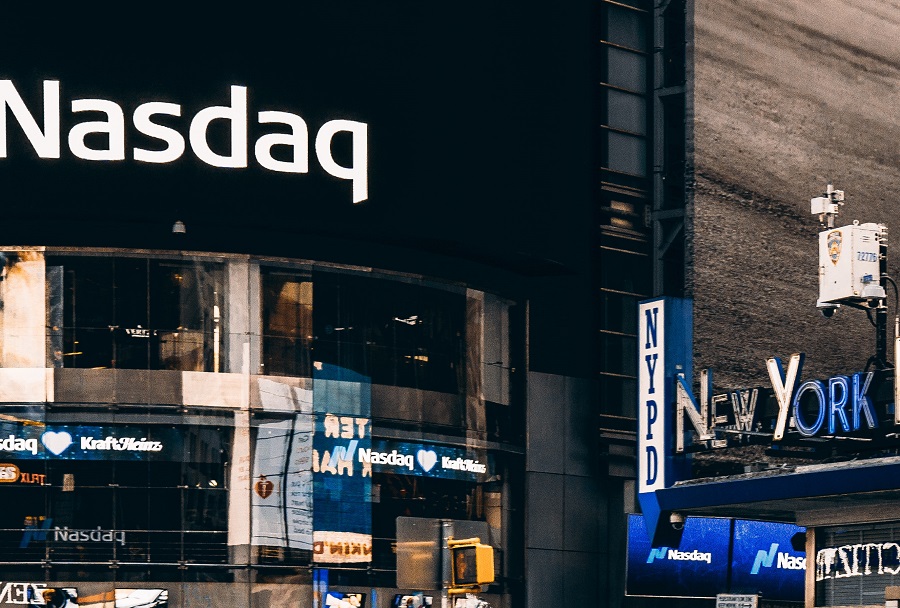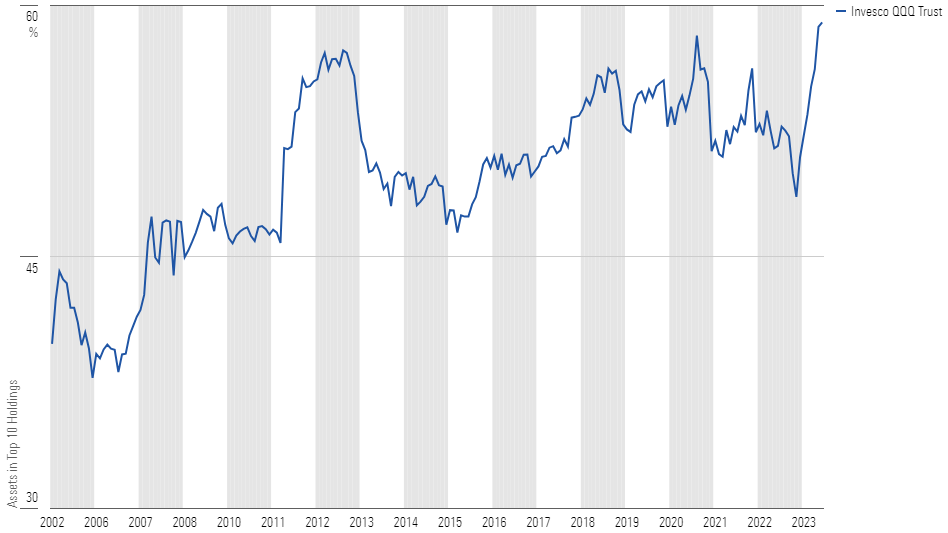
The Nasdaq-100 Index, the underlying index for the world’s fifth-largest exchange-traded fund—Invesco QQQ Trust QQQ—will undergo a Special Rebalance to address overconcentration of the index on July 24.
Here’s what you need to know about what a special rebalance is; what prompts one; and what the July 24 rebalance means for index and ETF investors.
What is the Nasdaq-100 Index?
The Nasdaq-100 Index includes 100 Nasdaq-listed nonfinancial companies. The index has become synonymous with tech investing, and it serves as a benchmark for ETFs and mutual funds globally. Funds tracking the Nasdaq-100 Index total nearly US$300 billion globally, with US$200 billion in assets under management for QQQ alone.
Below are the index funds tracking the Nasdaq-100:
Global Funds Tracking the Nasdaq-100 with Over US$1 Billion AUM

What is a Special Rebalance?
The Nasdaq-100 Index methodology stipulates the following:
“A Special Rebalance may be conducted at any time based on the weighting restrictions described in the Index Rebalance Procedure if it is determined to be necessary to maintain the integrity of the Index.”
The special rebalance will not result in the removal or addition of any securities. Instead, it is intended to reduce the index’s concentration in its largest constituents.
This will be the third Special Rebalance in the history of the Nasdaq-100 Index, with the first two coming in 1998 and 2011.
What prompted the Special Rebalance?
Growth stocks led the market rally in the first half of 2023 to the benefit of the growth-focused Nasdaq-100 Index. The performance of a small group of mega-cap stocks, now known as the “Magnificent Seven,” drove returns for the index and the broader market. These stocks include:
- Microsoft MSFT (Year-to-date return 38.93%)
- Apple AAPL (45.52%)
- NVIDIA NVDA (188.68%)
- Amazon.com AMZN (51.35%)
- Tesla TSLA (118.87%)
- Meta Platforms META (144.39%)
- Alphabet Class A GOOGL (31.98%) and Class C GOOG (31.71%).
These seven companies (combining Alphabet’s share classes) top the Nasdaq-100 Index by weight, and now represent nearly 55% of the index. This concentrated portfolio has become increasingly so in 2023.
QQQ Became Significantly More Concentrated in 2023

What is changing on July 24?
It has long been known that the Nasdaq-100 Index is overloaded, and the Special Rebalance is intended to address that growing concentration risk. Exactly how Nasdaq plans to do that is less obvious. We expect the weights of the Magnificent Seven to drop, but not by an extreme amount. The percentage of assets in the index’s top 10 holdings has consistently perched above 50%. So, the adjustments are not expected to change the current level of 59% significantly. Nasdaq will publish the planned changes a week ahead of the rebalance, which we will update here when available.
How will funds administer the changes?
Funds tracking the Nasdaq-100 Index will need to sell out of top holdings to the extent prescribed by the index, and they will then reallocate that cash to other stocks in the portfolio. The trades will likely be performed at the close on July 21.
How will investors be affected?
Investors of funds tracking the Nasdaq-100 Index will wake up on July 24 with a different portfolio. The differences won’t be vast, but the fund will be different. These portfolios face trading costs from the rebalance that could cause a minor drag on performance, and selling high-performing stocks comes with the potential for a tax bill for funds. An ETF like QQQ is among the most heavily traded securities in the United States, which results in plenty of opportunities for it to utilize in-kind creations and redemptions to purge low tax-basis securities, making capital gains distributions unlikely. Tax implications may differ for investors in smaller funds or those in jurisdictions with different tax treatment of in-kind creations and redemptions.
Most investors in U.S. stocks will be at least indirectly affected by the rebalance. Billions of dollars of stock will be bought and sold in response to the rebalance. Luckily, the selling will occur in some of the world’s most liquid stocks, meaning the price impact should be limited. Markets may experience a bit higher volatility as the changes become known and the market repositions.
What is the timeline of events for the Special Rebalance?
July 7: Special Rebalance announced.
July 14: Pro forma file released detailing index changes for upcoming rebalance.
July 24: Special Rebalance effective prior to the market open.
The author or authors own shares in one or more securities mentioned in this article. Find out about Morningstar’s editorial policies.









:quality(80)/cloudfront-us-east-1.images.arcpublishing.com/morningstar/MNPB4CP64NCNLA3MTELE3ISLRY.jpg)



.png)











